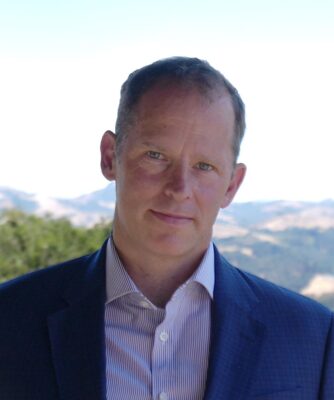
Forensic lidar scanning
When Fries first entered the world of forensic analysis and computer animation, lidar technology had not been used in a forensic capacity. Experts at the time obtained basic measurements of crime scenes with older surveying equipment, which was becoming too slow, cumbersome, and imprecise. The practice of forensic visualization needed a way to efficiently measure and display key forensic elements.
Around 1999, 3D Forensic was retained to produce an animation for a high-profile criminal case, State of Hawai’i v. Arakawa, which involved a fatal DUI accident. The necessary equipment would be highly impractical to fly from California to Hawaii, so Fries and the team considered alternative options. A chance encounter with a lidar sales rep led to an in-office demonstration of the technology during which he learned of its efficiency in mapping complex oil rigs. This demo became the first step towards what is now a worldwide industry.
Fries and his team utilized a lidar scanner to capture the incident location upon inspection. The data was not only captured more quickly than with previous methods, but also more accurately. After the equipment was transported back, the data was reformatted for modelling purposes and was easily visualized.
This scan became the foundation of the first courtroom visualization based on laser scanning that was admitted into the United States court system. 3D Forensic not only produced the first lidar-based visualization for the Hawaii State Circuit Court, but would later produce the first for the Santa Clara Superior Court.
Quickly, Fries realized the practical applications of this technology for preserving forensic elements including environments, vehicle wreckages and ballistic trajectories. Lidar scanning became the preferred method of forensic measurement as the lidar systems can:
- be operated by one person
- capture 3D data without placing operators directly in hazardous locations such as active roadways or construction zones
- capture an abundance of measurement points, reducing the likelihood of incorrect measurement.
Through continued use of lidar scanning for forensic analysis, Fries invented the practice of “laser-based photogrammetry.” This process enables 3D specialists to extract precise measurements from still images or video by comparing them to 3D lidar-scanned environments. Laser-based photogrammetry has since become an indispensable tool for determining measurements for legal and forensic cases.
Today, lidar scanning plays a role in almost all his firm’s offerings. Scans are employed to capture measurements of critical elements, share data among experts, and serve as the foundation of forensic animations.
This work has helped standardize the lidar scanning of forensic incidents such as accidents or shootings. Forensic lidar has since been adopted by the FBI and a growing number of police and multidisciplinary accident investigation teams across the globe. Many other forensic firms have since adopted this process for the analytical and visual benefits.
Jason Fries’s background
Today, Fries applies his lidar intuition to his forensic technology firm, 3D Forensic. The firm delivers forensic analysis, visualization, and testimony for court cases on the sides of plaintiffs, prosecutors and defenses. Fries regularly testifies on matters involving:
- Laser scanning
- Forensic animation
- Use-of-force reconstruction
- Ballistic trajectory analysis
- Video reconstruction
- Nighttime visibility
- Line-of-sight analysis
Since the inception of forensic laser scanning, 3D Forensic has produced over 1500 animations, most of which were developed from lidar scans. The firm has completed over 3000 cases to date and maintained a 100% admissibility rate through 20 years.
Fries has since applied forensic lidar scanning to the practice of use-of-force analysis. He has gained recognition as one of the nation’s top officer-involved shooting (OIS) experts through his modernization of forensic analysis in this area. By combining 3D visualization with advanced video analysis and human-factors expertise, use-of-force analysis has become much more technically standardized. Fries built his understanding of OIS and human-factors expertise through completion of the highest training program offered by the Force Science Institute. The graphics in this article are examples of OIS visualizations.
He has also worked with leading academics to help develop advanced analytical procedures in the fields of nighttime video analysis as well as mathematical procedures to create forensically accurate driver’s eye videos.
He has written articles on accident and crime reconstruction and simulation for Forensic Magazine, Claims Magazine, the California District Attorneys Association Quarterly Journal, the Consumer Attorney of California’s Forum Magazine and Right of Way Magazine.
Fries has delivered lectures and training to members of the Highway Safety Transportation Board, the California Association of Accident Reconstruction Specialists, Continued Legal Education International, the National Association of Professional Engineers, the Forensic Expert Witness Association, the Society of Forensic Engineers and Scientists, the International Right of Way Association, UC Hastings School of Law and the Transportation Research Board Human Factors Workshop.